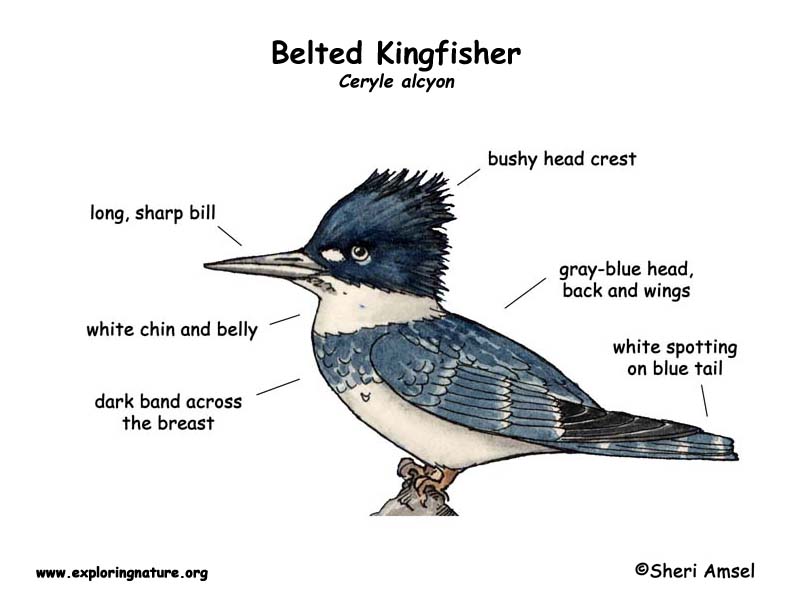

They breed from Alaska, across Canada to Newfoundland, and south through the U.S. They spend the winter in southern Canada south to northern South America.
They live by rivers, ponds and lakes and winter along coastlines as well.
They have a long, sharp bill and a bushy head crest. They have a gray-blue head, back and wings and a white chin and belly with a dark band across their breast.
They hover over the water and dive for fish. They have a loud rattling call.
They eat mostly fish, but will also take insects, frogs and crayish.
They nest in a burrow in a bank near the water. The female lays 5 - 8 white eggs.
Kingdom: Animalia
Phylum: Chordata
Subphylum: Vetebrata
Class: Aves
Order: Coraciiformes
Family: Alcedinidae
Genus: Megaceryle
Species: M. alcyon
When you research information you must cite the reference. Citing for websites is different from citing from books, magazines and periodicals. The style of citing shown here is from the MLA Style Citations (Modern Language Association).
When citing a WEBSITE the general format is as follows.
Author Last Name, First Name(s). "Title: Subtitle of Part of Web Page, if appropriate." Title: Subtitle: Section of Page if appropriate. Sponsoring/Publishing Agency, If Given. Additional significant descriptive information. Date of Electronic Publication or other Date, such as Last Updated. Day Month Year of access < URL >.
Amsel, Sheri. "Kingfisher (Belted)" Exploring Nature Educational Resource ©2005-2024. December 14, 2024
< http://www.exploringnature.org/db/view/Kingfisher-Belted >

